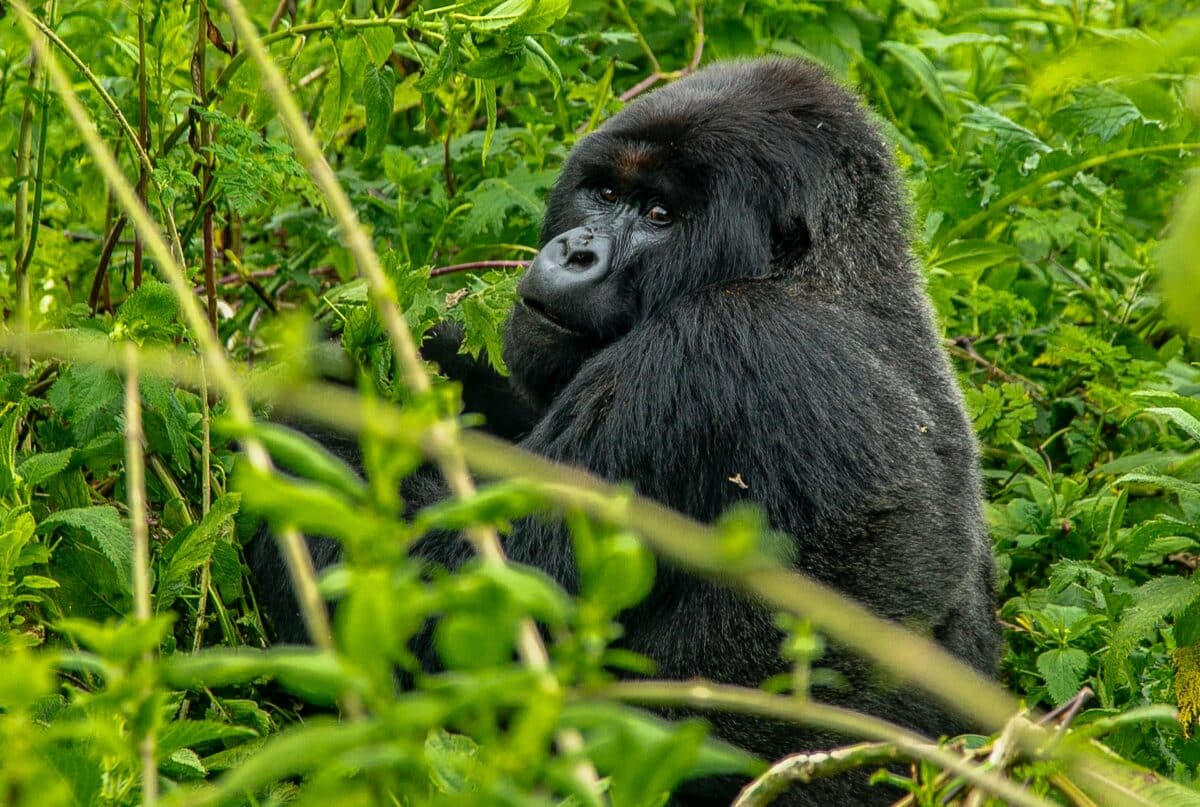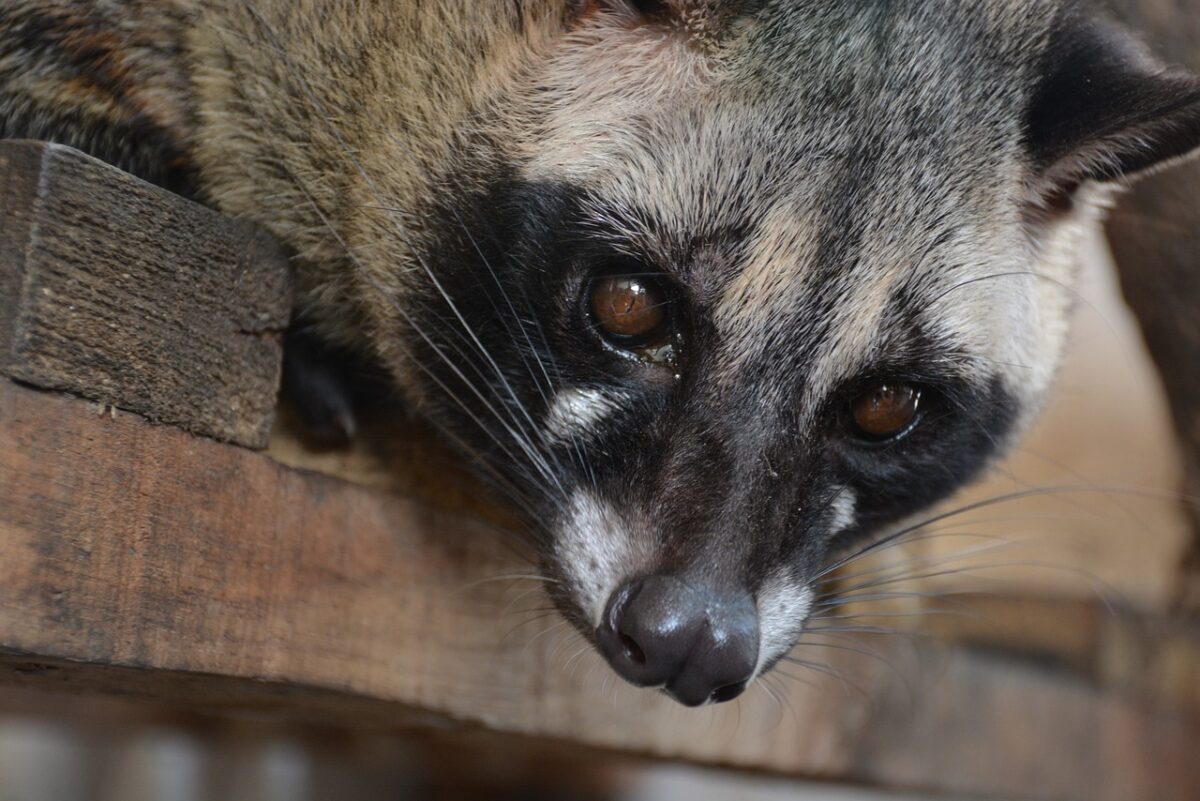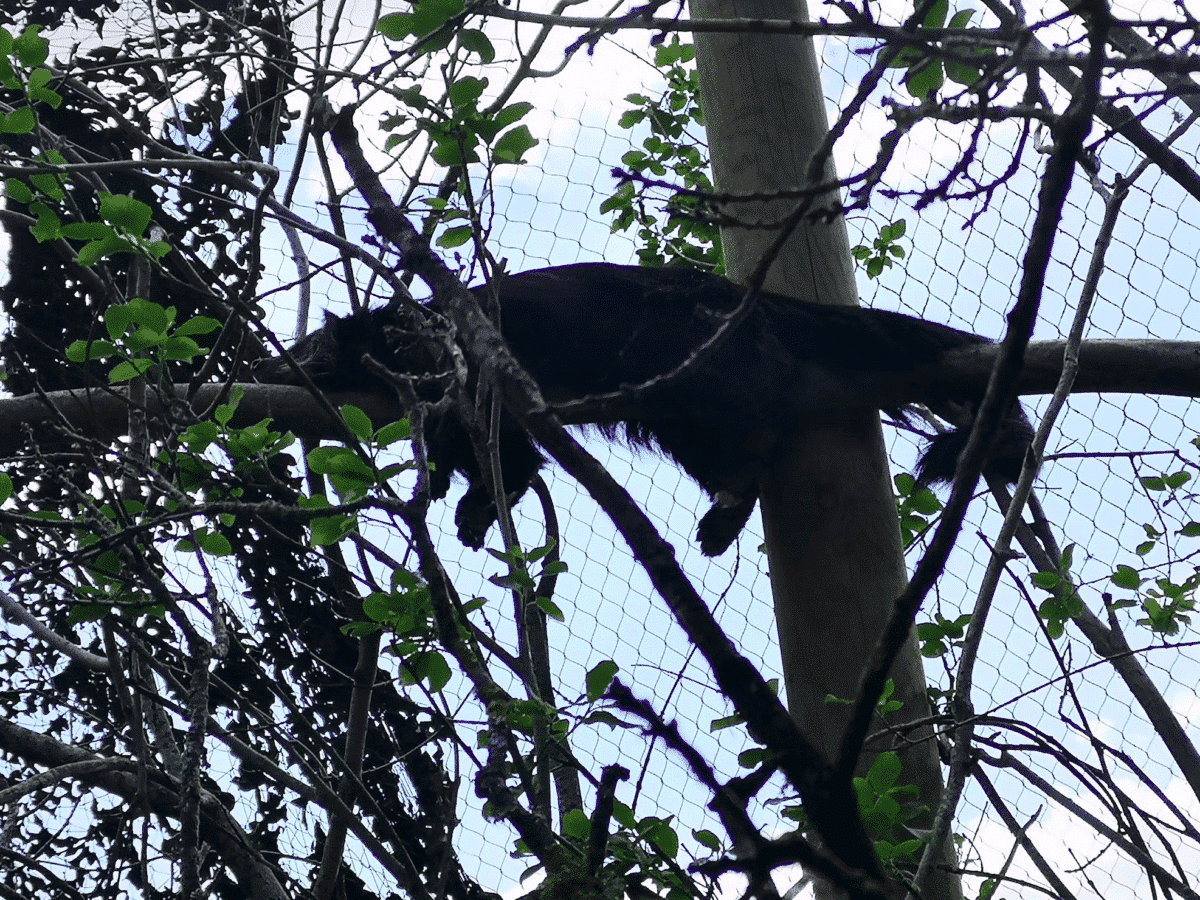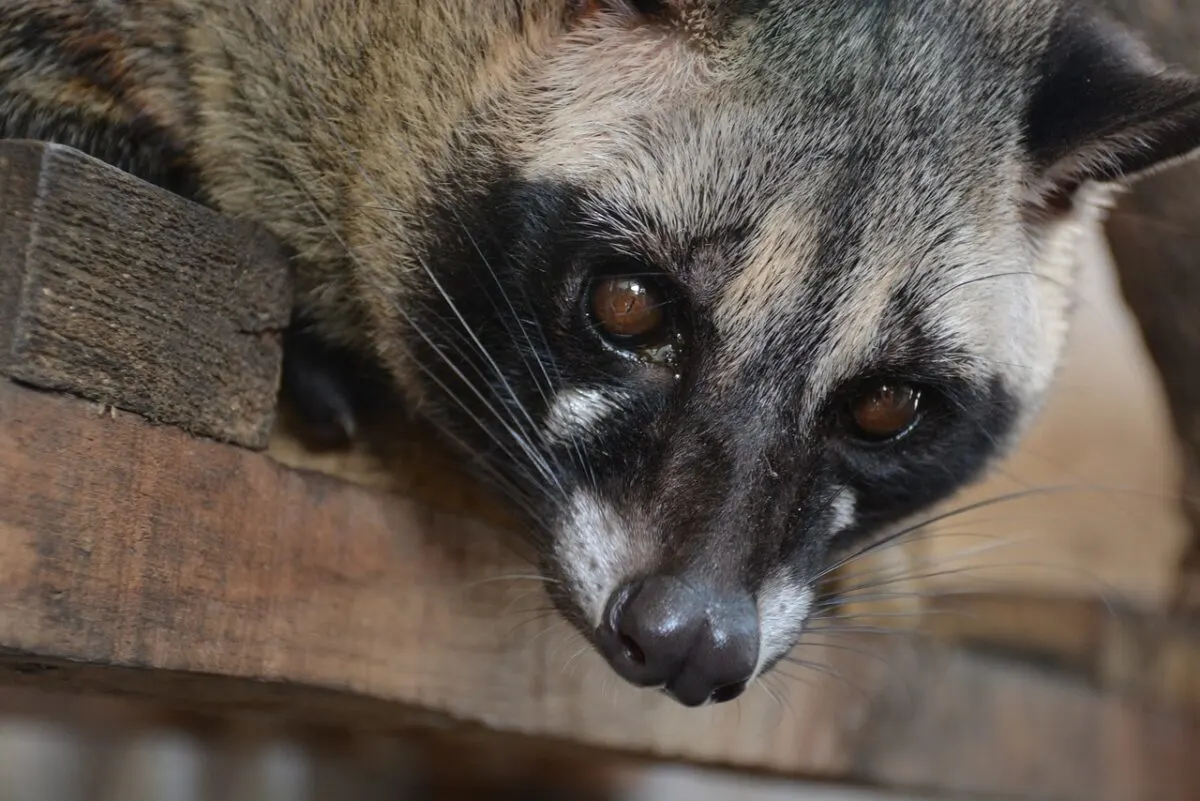Are you ready for a wild ride through the animal kingdom? In one corner, we have the majestic and mighty gorilla – one of the closest human relatives in the animal kingdom and in the other, we have the elusive and agile civet – a small, nocturnal mammal known for its unusual scent glands.
In this article, we will explore the various qualities of these two unique and amazing animals. We’ll delve into their anatomy and habitats, learn about their behaviors, discuss conservation efforts, and ultimately, determine which one reigns supreme in the animal kingdom.
So strap in tight – it’s time to go on an exciting journey through zoology!

Want to jump ahead? Click below
Comparison Table
| Category | Gorillas | Civets |
|---|---|---|
| Appearance | Large, muscular primates with black fur, silver hair, and prominent brow ridges. Males can weigh up to 400 lbs (180 kg) and stand up to 6 feet (1.8 m) tall. | Small, nocturnal mammals with long, slender bodies, short legs, and thick, brown fur. They typically weigh between 3-10 lbs (1-5 kg) and are 16-28 inches (40-70 cm) long. |
| Habitat | Found in the jungles and forests of Central Africa. | Found across Asia and Africa in a variety of habitats, including forests, grasslands, and agricultural areas. |
| Social Behavior | Highly social animals that live in groups called troops. They have a complex social hierarchy and communicate through a variety of vocalizations, gestures, and body postures. | Solitary animals that typically only interact with each other during the mating season. Their communication is much less elaborate than gorillas, consisting mainly of scent marking and vocalizations that signal aggression or territoriality. |
| Diet | Herbivores that primarily eat leaves, stems, and fruit, with occasional insects and small animals. | Omnivores that eat a variety of foods, including fruit, small mammals, birds, reptiles, and insects. |
| Hunting Tactics | Don’t typically hunt for food, but can be aggressive if provoked or feel threatened. | Stealthy predators that rely on their agility and quick reflexes to catch prey, such as small rodents and insects. |
| Breeding Habits | Females typically give birth to one baby after a nine-month gestation period. Gorillas mate within their own groups, and the dominant male exercises exclusive mating rights. | Females give birth to litters of 2-4 babies after a two-month gestation period. Civets are solitary creatures who generally only come together during the breeding season. |
| Conservation Status | Endangered due to habitat loss, poaching, and disease. | Varies by species, but many civet species are threatened due to habitat loss, hunting for bushmeat and the wildlife trade. |
Anatomy and Habitat of Gorillas & Civets

Gorillas and civets are very different animals, but both are fascinating in their ways. Gorillas are one of our closest relatives in the animal kingdom, sharing more than 98% of our DNA. These magnificent creatures are typically found in the jungles and forests of Central Africa, where they feast on leaves, stems, fruit, and sometimes even insects.
Conversely, the civets are small, nocturnal mammals found across Asia and Africa. They are known for their unusual scent glands, which they use to mark their territory and communicate with other civets. Despite their differences, both gorillas and civets are living reminders of the incredible diversity and beauty of the natural world.
Differences in Gorilla vs. Civet Social Interactions & Communication

Gorillas are known for their sophisticated social structure, which is heavily influenced by communication. They use a variety of vocalizations, gestures, and body postures to express themselves, establish dominance, and maintain group cohesion.
Civets, conversely, are solitary animals that typically only interact with each other during the mating season. Their communication is much less elaborate than gorillas, consisting mainly of scent marking and vocalizations that signal aggression or territoriality.
Despite these differences, both gorillas and civets have adapted to their respective social environments and communicate in ways that help them to survive and thrive in the wild.
Dietary Habits of the Gorilla vs. Civet

Gorillas and civets may be animals, but their dietary habits couldn’t be more different.
While gorillas are herbivores, meaning they only eat plants, civets are omnivores, meaning they eat both plants and animals. Gorillas generally consume a lot of fruits, leaves, and bark, with occasional insects and small animals.
Conversely, civets have a more varied diet that includes fruit, small mammals, birds, reptiles, and insects. These distinct eating habits reflect the evolutionary adaptations of each species to their respective environments.
Despite their differences, both gorillas and civets play crucial roles in maintaining the natural balance of their ecosystems.
Hunting Tactics Used by Gorilla vs. Civet

The world of animal hunting tactics is fascinating, and the strategies employed by different creatures can be vastly different. For example, in the case of gorillas and civets, the hunting approach diverges significantly.
While gorillas have immense strength and power that they use to their advantage, civets are stealthy and rely on their agility and quick reflexes to catch prey. Observing these two animals in the wild can be a thrilling experience as you witness how they adapt to their environment and utilize their unique skills to secure their next meal.
Whether you’re interested in animal behavior or biology or enjoy observing nature in action, observing the hunting tactics of gorillas and civets is an experience you won’t soon forget.
Breeding Habits & Reproduction Strategies of Gorilla vs. Civet

As two very different species within the animal kingdom, gorillas and civets have vastly different breeding habits and reproduction strategies. As highly social creatures, Gorillas tend to mate within their own groups and have one dominant male who exercises exclusive mating rights.
Civets, conversely, are solitary creatures who generally only come together during the breeding season, typically during the winter months. Additionally, civets have a unique reproducing method known as delayed implantation, where the embryo does not immediately attach to the uterine wall.
These differences between gorillas and civets in their mating behaviors and reproductive strategies provide insight into the diverse and intricate ways that animals can reproduce and perpetuate their species.
Adaptive Traits of Gorilla vs. Civet for Survival in the Wild

In the wild, animals must have certain adaptive traits to help them survive and thrive in their environment. Two examples are the gorilla and the civet, which have unique characteristics that enable them to survive in their habitats.
Gorillas are known for their incredible strength and intelligence, making them one of the most potent primates on the planet. Their large size and muscular build give them the strength to navigate through dense forests and climb trees, while their intelligence allows them to problem-solve and utilize tools.
On the other hand, the civet is a small, nocturnal mammal that has adapted to live in various environments. Their unique sense of smell and agility make them excellent climbers, allowing them to escape predators and find food in hard-to-reach places.
Both the gorilla and civet are fascinating examples of how animals can adapt to their surroundings to ensure survival.
Key Points

| Gorillas are one of our closest relatives in the animal kingdom, sharing more than 98% of our DNA, while Civets are known for their unusual scent glands, which they use to mark their territory and communicate with other civets. |
| Gorillas are known for their sophisticated social structure, which is heavily influenced by communication, Civets, conversely, are solitary animals that typically only interact with each other during the mating season. T |
| While gorillas are herbivores, meaning they only eat plants, civets are omnivores, meaning they eat both plants and animals. Gorillas generally consume a lot of fruits, leaves, and bark, with occasional insects and small animals. |
Wrapping Up with Gorilla vs. Civet
All in all, gorillas and civets are two species of animals that inhabit different parts of the world. While both species share some evolutionary traits and behavior, they also have stark differences in anatomy, social interactions, communication, diet habits, hunting tactics, breeding habits, and adaptive traits for survival.
Their differences make each species unique and fascinating to observe in the wild. It is essential to understand the intricate details of these species so we can better appreciate their place in our environment.
By learning more about gorillas and civets, we can help protect them and conserve their habitats to preserve these incredible species for future generations.
Thanks for following along with me! I hope you enjoyed reading about these two interesting animals. Next are The Man-Eaters of Tsavo, Gorilla vs. Caribou, and Gorilla vs. Beaver.
Join our Forum for free today!

- Surprised By A Snake In My Toilet In Bali - July 24, 2024
- Discover the Profound Spiritual Meaning of the Brown Bear - July 24, 2024
- Unexpected Snake Slithers Across My Windshield On Arizona Highway - July 23, 2024


